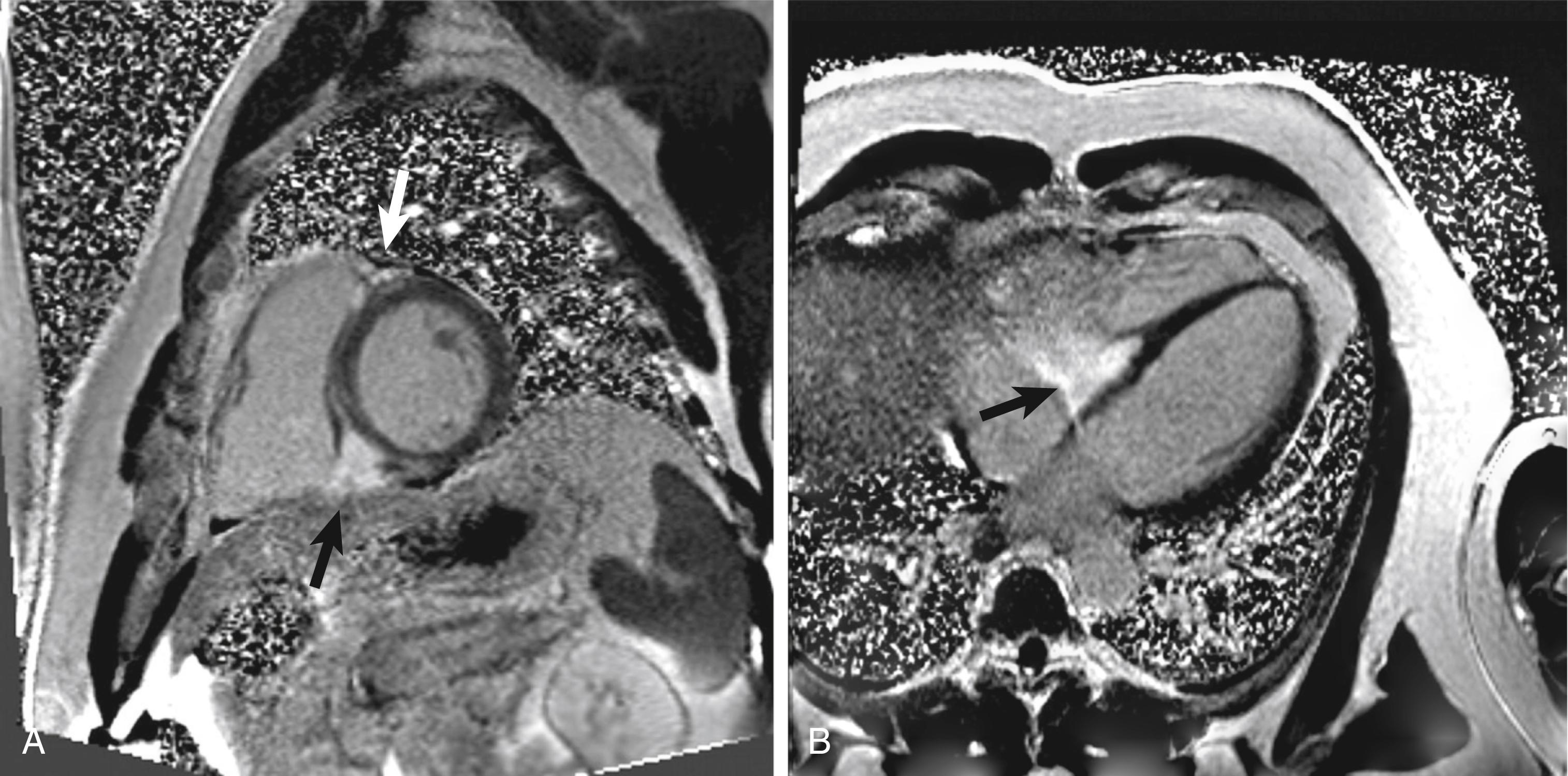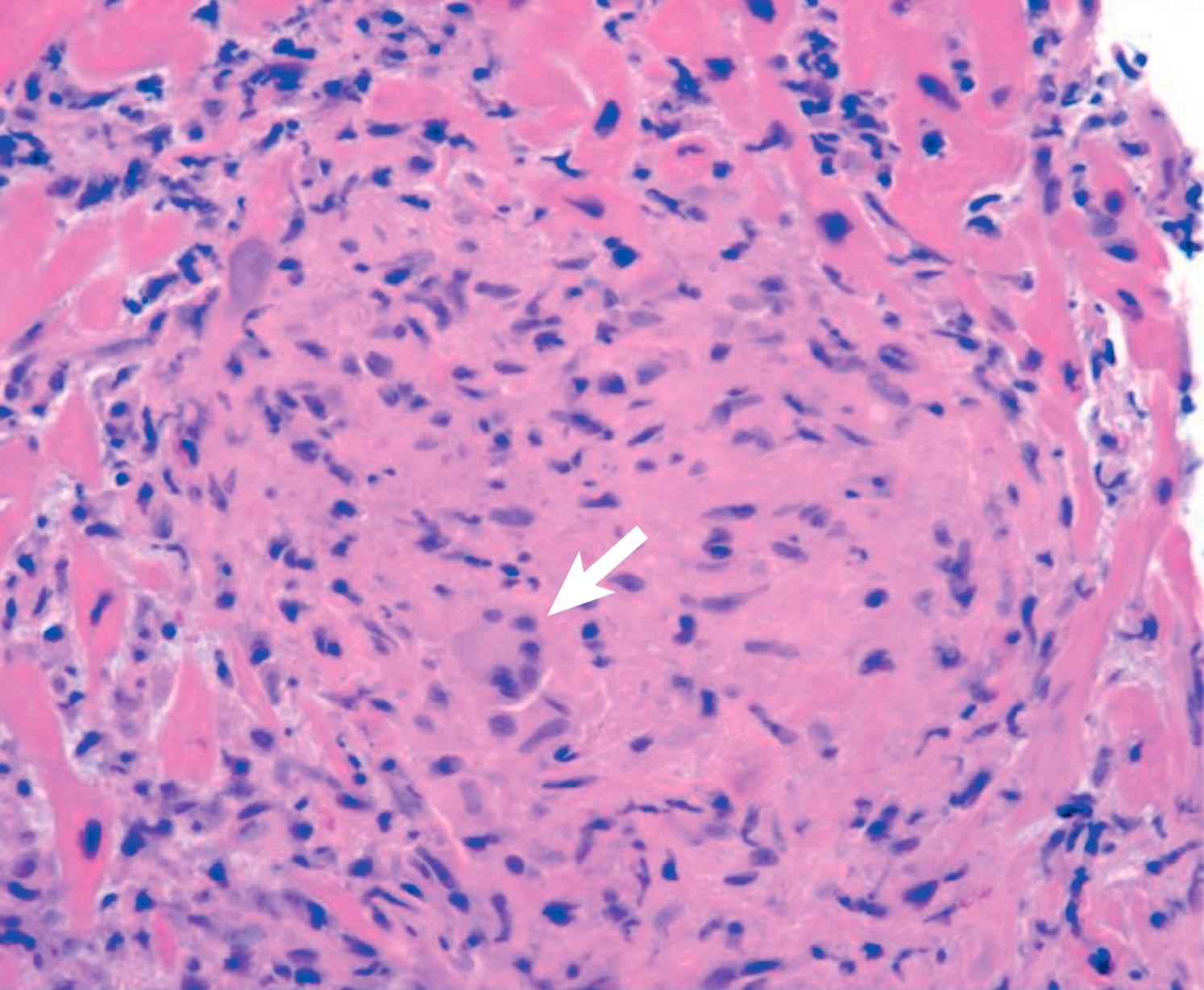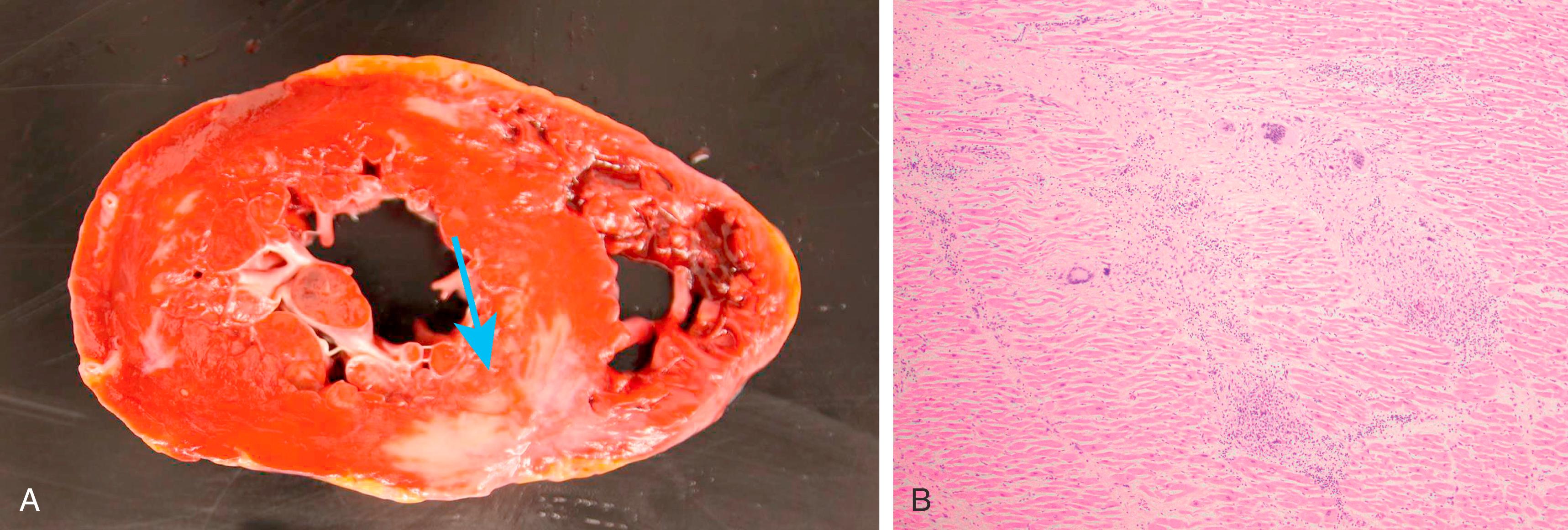Physical Address
304 North Cardinal St.
Dorchester Center, MA 02124
Sarcoidosis is an inflammatory disease of unknown etiology, defined histologically with noncaseating granulomas and subsequent tissue scarring. Sarcoidosis most commonly involves the lungs but can be seen in virtually all organ systems, including eyes, skin, liver, lymph nodes, the neurologic system, and the gastrointestinal (GI) system. A minority of cases affect the heart; nevertheless, cardiac disease is an important cause of morbidity and mortality. Inflammation and tissue scarring in the heart can cause both arrhythmias and cardiac dysfunction, including heart block, sudden death, ventricular tachycardia (VT), atrial fibrillation (AF), and heart failure (HF) requiring transplantation.
Based on an analysis of the Optum health care database from 2010 to 2013, the highest incidence of cardiac sarcoidosis (CS) is seen in the African American population (17.8 per 100,000 per year) followed by whites (8.1 per 100,000 per year); the lowest incidence is in Hispanics and Asians (3–4 per 100,000 per year). There is also geographical variation in the occurrence of sarcoidosis with a higher occurrence rate noted in northern latitudes and a lower occurrence rate in the western US states. There is a slight female predominance, which is highly pronounced in African Americans with females being affected twice as often as males. , Sarcoidosis is more often diagnosed in patients between the ages of 25 and 45 years with a second peak after the age of 50 years noted in females in Europe and Japan. ,
The exact prevalence of CS is controversial because of difficulties in the systematic diagnosis of cardiac involvement (discussed later). The disease is being diagnosed more frequently over time. The extent to which the increased rate of diagnosis of CS relates to an increase in disease prevalence versus an improved appreciation of existing disease phenotypes is not clear. Cardiac involvement has been noted in 2% to 5% of patients with systemic sarcoidosis. Pathology data suggest a prevalence of up to 25% in an autopsy series of patients with sarcoidosis, and the incidence of detected CS in systemic sarcoidosis patients is estimated at 4% to 55% using cardiac magnetic resonance (CMR) imaging.
The pathogenesis of sarcoidosis in general is not known. A genetic predisposition likely exists in some patients. There is evidence of familial clustering in 5% to 18% of cases. Additionally, genetic studies have identified human leukocyte antigens (HLA) and non-HLA alleles as associated with sarcoidosis susceptibility and prognosis. Further, environmental triggers are thought to play a role. These could include exposure to atypical infectious agents, including Mycobacterium and Propionibacterium species. Inorganic environmental exposures, such as to heavy metals, may play a role as well. Complex immunologic pathways are responsible for the formation of nonnecrotizing granulomas, which are the hallmark of sarcoidosis. CD4-positive T cells and regulatory T cells release cytokines such as interleukin (IL)-2, tumor necrosis factor (TNF)-α, and interferon-γ. The exact mechanism underlying initiation of these immunologic pathways resulting in granuloma formation remains unclear.
Patients may present for the first time with CS with a history of sarcoidosis involving other organ systems, but many patients present for the first time with their cardiac manifestations of disease with no history of clinical extracardiac sarcoidosis. Sarcoid involvement in the myocardium may have pericardial, epicardial, and endocardial involvement as a result of direct extension from deep within the myocardial tissue. The clinical manifestation of CS depends on the location, extent, and activity of the disease.
Damage to the His-Purkinje system, resulting in symptomatic heart block, is most often seen in CS as a result of granuloma formation in the base or mid interventricular septum ( Figs. 109.1 and 109.2 ). Sinus node dysfunction or atrioventricular (AV) conduction disease can also be seen because of granuloma-induced scar tissue formation around the sinoatrial or AV nodal arteries, causing ischemia in the sinus node or conduction system. A Canadian study showed that 34% of patients with unexplained AV block between the ages of 18 and 60 years were diagnosed with CS using fluorodeoxyglucose positron emission tomography/computed tomography (FDG-PET/CT), and a study involving patients aged 18 to 55 years from the pacemaker registry of Helsinki University Central Hospital showed the presence of biopsy-verified CS in 19% of patients with unexplained AV block. Thus it is recommended that patients under the age of 60 years presenting with new unexplained conduction system disease (Mobitz II or third-degree heart block) be screened for CS.


In a systematic review, 47.4% of patients treated with corticosteroids showed improvement in AV conduction, compared with 0% in those that were not treated with corticosteroids. Indeed, steroid-responsive heart block is consistent with a diagnosis of CS, as discussed later. Appropriate implantable device selection for permanent pacing is also important. In CS patients who have an indication for permanent pacing, implantation of an implantable cardioverter-defibrillator (ICD) to provide both pacing support and sudden death prevention currently has a Class IIa recommendation.
Sudden death is the initial presentation in some patients with CS with a reported incidence of 14% in a series of 351 CS patients. Sudden death may be as a result of complete heart block or ventricular arrhythmias (VAs) and can occur even in patients with normal ventricular function ( Fig. 109.3 ).

In CS patients with an ejection fraction (EF) of less than 35% or syncope, an ICD is recommended to prevent sudden death (Class I and IIa level recommendation, respectively). An ICD can be considered in those with EF greater than 35% and no need for permanent pacing, who have inducible VT at electrophysiology study (Class IIa recommendation).
Become a Clinical Tree membership for Full access and enjoy Unlimited articles
If you are a member. Log in here